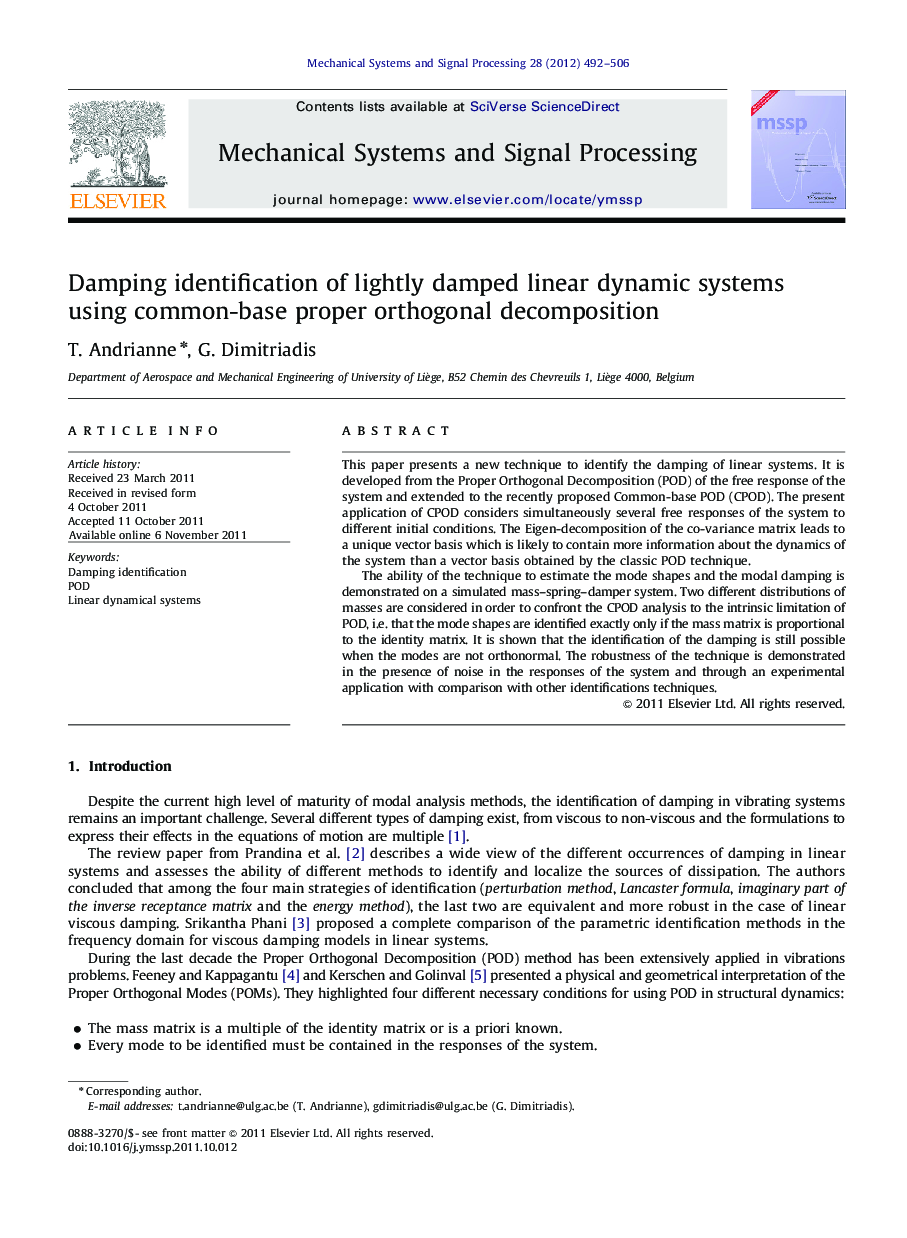| Article ID | Journal | Published Year | Pages | File Type |
|---|---|---|---|---|
| 559500 | Mechanical Systems and Signal Processing | 2012 | 15 Pages |
This paper presents a new technique to identify the damping of linear systems. It is developed from the Proper Orthogonal Decomposition (POD) of the free response of the system and extended to the recently proposed Common-base POD (CPOD). The present application of CPOD considers simultaneously several free responses of the system to different initial conditions. The Eigen-decomposition of the co-variance matrix leads to a unique vector basis which is likely to contain more information about the dynamics of the system than a vector basis obtained by the classic POD technique.The ability of the technique to estimate the mode shapes and the modal damping is demonstrated on a simulated mass–spring–damper system. Two different distributions of masses are considered in order to confront the CPOD analysis to the intrinsic limitation of POD, i.e. that the mode shapes are identified exactly only if the mass matrix is proportional to the identity matrix. It is shown that the identification of the damping is still possible when the modes are not orthonormal. The robustness of the technique is demonstrated in the presence of noise in the responses of the system and through an experimental application with comparison with other identifications techniques.
► We propose a new identification technique of lightly damped structures. ► It is based on the free displacement responses of the system. ► It takes advantage of the Common-base Proper Orthogonal Decomposition (CPOD). ► CPOD enables the simultaneous consideration of multiple responses. ► Very good estimates of the modal damping are found from experimental data.
